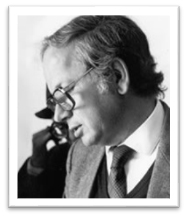 Antonio Barone
Antonio Barone
1939-2011
Antonio Barone (AB) prematurely passed away on Dec 4th 2011 at the age of 72, after a one-year battle with cancer. He left behind his wife Sveva and his two sons, Alberto and Livio. Antonio was currently Professor Emeritus at the University of Napoli Federico II, where he had been teaching for about 40 years.The initial research activity of AB was in the field of nuclear physics. In this context, almost 45 years ago, the Ge “Lithium drift” semiconductor detectors represented a novelty, due to the high energy resolution allowed by those devices. Superconductors stimulated new approaches to radiation detection and this motivated Antonio’s interests toward the superconductivity. In the 1967 the birth of the Laboratorio di Cibernetica of the CNR offered him the possibility to work in a joint project USA-Italy (University of Wisconsin, Madison - CNR Naples) in the field of superconductivity on the peculiar subject of the superconductive “Neuristors”. His research activity on Josephson junctions opened a wide variety of very stimulating subjects in which AB was deeply involved, ranging from the soliton propagation in “long” Josephson structures to fluctuations phenomena, from light-sensitive junctions and proximity effect to the development of innovative superconducting devices.
The strong interaction of AB with the Landau Institute for Theoretical Physics of the Academy of Sciences, in Moscow, characterizes a long period of his research activity with a precious merging of theoretical and experimental aspects. All this body of work converged into the famous monograph on the “Physics and Applications of the Josephson Effect”, written in collaboration with Gianfranco Paternò in 1982. This became rapidly the reference text for the Josephson effect, as documented by thousands of citations and the fact it was translated into Russian, Japanese and Chinese. In 1983, AB was awarded by the Academy of Sciences in Moscow the highest academic title of “Doctor of the Physical-Mathematical Sciences”, and later the coveted Kapitza Prize.
The discovery of high-Tc superconductors (HTS) opened new problems and perspectives. In this context, AB and his group, significantly contributed by reporting original results on the “archetype” high-Tc Josephson junctions. Of great impact were the studies on unconventional superconductivity, first developed for ”p-wave” superconductors, but definitely very inspiring for the d-wave experiments on HTS compounds, and later on the physics of HTS Josephson junctions.
Macroscopic quantum phenomena and “particle detectors” are the keywords and the logical paths where to bring back several relevant contributions of Antonio scattered in more than 40 years of activity. Topics of his interest ranged from the fundamentals of macroscopic quantum tunnelling to barrier penetration in nonstationary fields, to finally a project into a wider vision of macroscopic quantum phenomena in unconventional systems.
Antonio is universally considered not only the founder of the Superconductivity School in the Napoli area, but also as the “grande maestro” and one of the most representative physicists in Italy. He has filled very relevant positions of scientific management in Italy and participated in many international committees. He has significantly contributed to the popularization of superconductivity as a divulgator, as a professor, as a researcher and as a manager.
An intense wave of sympathy and friendships has arrived from all over the world testifying how his gentleness, his sense of science and his smile were a solid bridge of friendship and respect with colleagues, students and people of everyday life. This premature departure cannot be dissociated from so many years spent working together. This moment cannot be dissociated from the awareness of having had the privilege to deal with a real gentleman of science and life, a man of vision and perspective.
- Francesco Tafuri, Giampiero Pepe and Ruggero Vaglio

